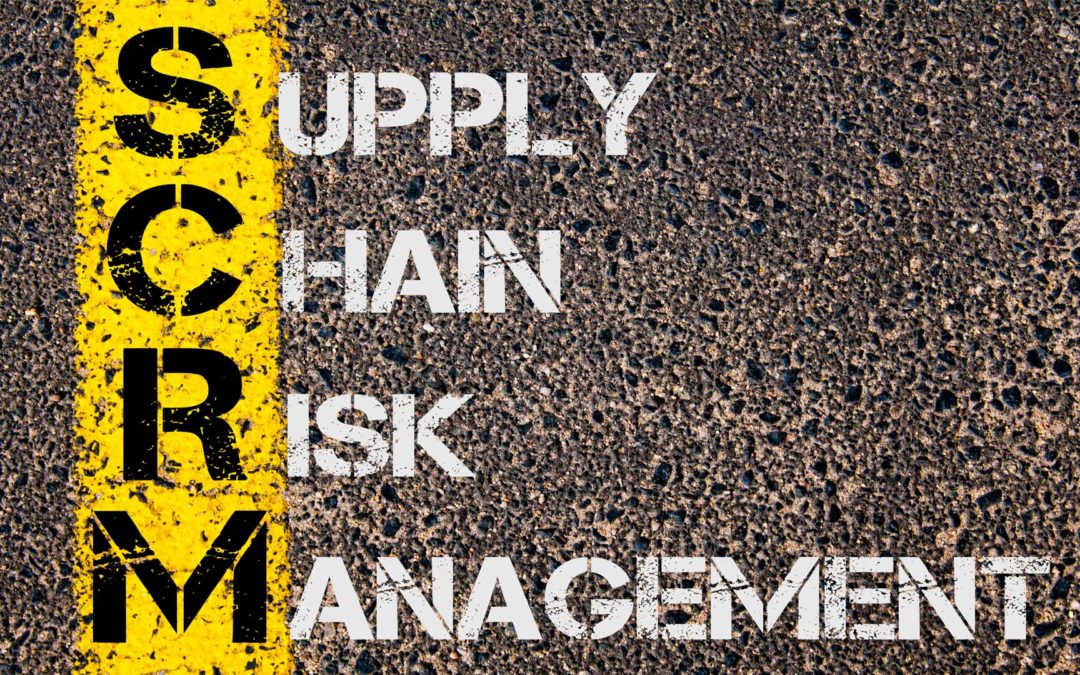Here are five steps all companies can take now to improve their supply chain risk management in 2022.
Removing risk from the supply chain has become a key goal for organizations as they continue to navigate the complexities of the global pandemic and related supply chain disruptions. Whether their products are sitting on a ship anchored off the coast of California, waiting for trucking capacity to free up for final transport to a customer location, or not even produced yet due to the ongoing labor shortage, companies across the board are taking a harder look at supply chain risk and figuring out how to reduce it.
“Businesses have been through much unpredictability with supply chain disruptions that have impacted their clients,” Atradius’ Aaron Rutstein points out in Supply & Demand Chain Executive. “While these issues should improve in mid-2022, companies should prepare for supply chain shortages by looking for additional sources and possibly investing in higher-than-normal inventory to allow for increased and unpredictable consumer demand.”
Companies should keep this in mind as 2022 kicks off and we move into the third year of pandemic-related supply chain disruptions and uncertainty. Here are five steps organizations can take now to both address their current challenges and leverage new opportunities that present themselves this year:
- Know who you’re working with. As businesses choose trading partners going forward, Rutstein says they need to watch out for red flags. Particularly for new vendors, it’s always important to know their fundamentals and business viability. One of the clearest indicators of trouble is a business’ payment behavior. “One way to check is by knowing their patterns of payment and if they have missed payments,” he writes. “Tightening a business’ credit management by making sure there are proper credit procedures can save money in the long run.”
- Diversify your supplier base. Make sure that you have multiple vendors in your supply chain, locally and internationally, and both primary and backup. “It’s also important to have a stringent list of criteria to follow when selecting them, including lead time, pricing, a thorough quality audit and a facility tour,” Vincent Tricarico writes in 5 Ways of Effectively Navigating Supply Chain Disruptions. “And, since it’s best to select a supplier with strengths aligned to your business wherever possible, good communication is paramount in order to understand how to select one supplier over another.” Finally, Tricarico says slow response time is the biggest telltale sign that a candidate probably isn’t a great fit for your organization’s needs.
- Use models to anticipate disruptions and plan for recovery. In 14 Ways Companies Can Minimize Supply Chain Disruptions Using Technology, Northeastern University’s Usama Fayyad says the biggest issue right now is not the supply chain disruptions in themselves; it’s the way organizations have optimized their supply chains to the point where even small disruptions can have disproportionately big impacts. “We need to establish resilience in the face of increasing disruptions,” Fayyad says. “Thus, the use of models that anticipate disruptions and the use of technology to understand impacts and plan recovery need to become routine.”
- Be open and honest with customers. With order lead times extending months or even years in some cases, now is a great time to open those lines of communication with customers and let them know exactly what’s going on. “Honest and open communication with customers is crucial, and the ability to proactively update them requires a strong and experienced support team,” Tricarico writes. “One way to stay ahead of the curve is to proactively ask for updates from suppliers: these will help you inform customers earlier in the process whether a material will have a longer-than-expected delivery time. If need be, you can then pursue alternative options.”
- Ramp up your supply chain visibility. Look beyond gaining insight into your internal data and focus on having connected data from manufacturers to final delivery of products readily accessible when needed. Without this key information, you’ll just be forced to react to this disruptive environment rather than proactively manage it. Right now, for example, Quickbase says companies are reacting to unexpected changes in the supply chain on a weekly (43%) and daily (36%) basis. “Supply chain managers must make sure the right goods and materials are in the right place at the right time, budgeted for appropriately, and replenished as needed,” Supply Chain Dive “To do this, they need access to a real time picture to manage every aspect of the chain.”
.jpg)
IntelliTrans’ Global Control Tower provides high levels of supply chain transparency; aggregates, completes, and enhances data from a variety of sources; offers visibility into and execution of different aspects of the supply chain; and generates data-driven alerts and analytics that ask deeper questions and deliver meaningful insights.
By leveraging tracking information, the Global Control Tower provides analytics that measures key performance indicators (KPIs) like fleet cycle time, origin/destination dwell time, lane and hauler performance, back orders, freight spend, load optimization, and more. With their rate, equipment, lease, tracking, and invoice data in a central repository that’s accessible 24/7, companies can position themselves for success in any market conditions.

